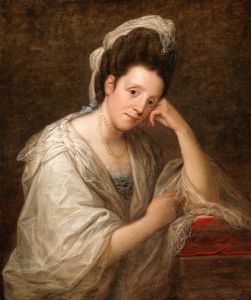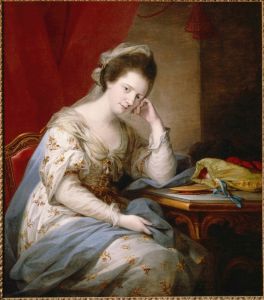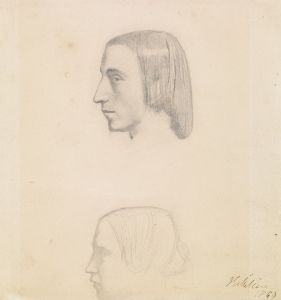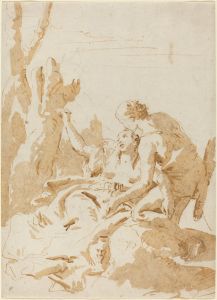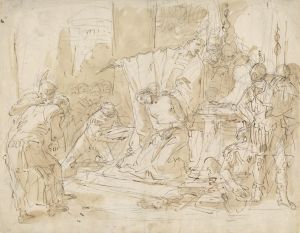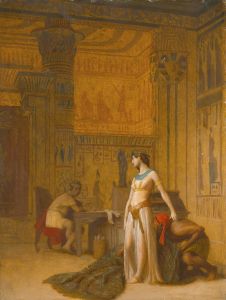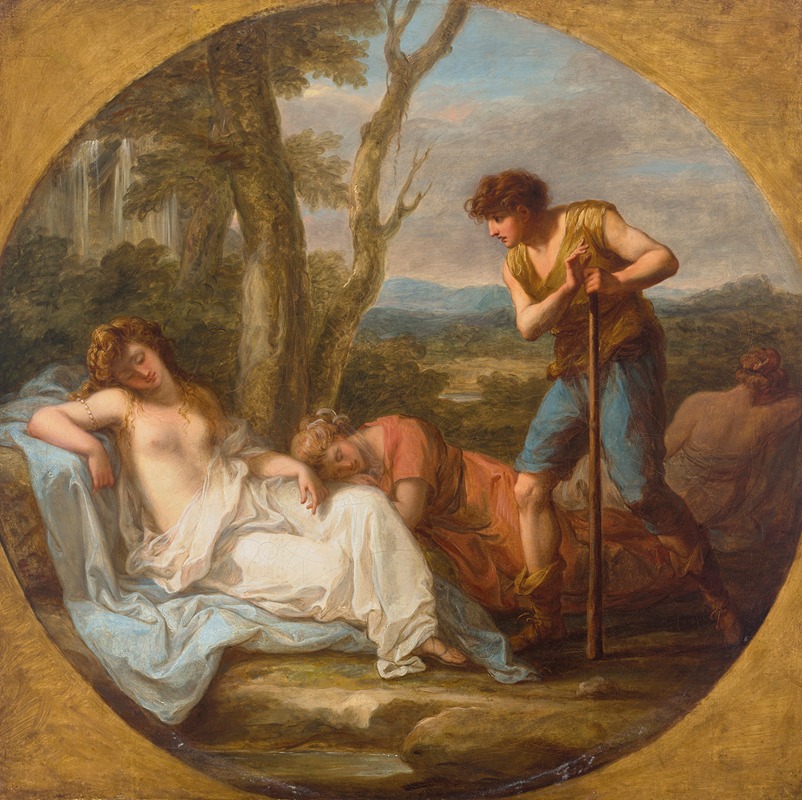
Cimon and Iphigenia
A hand-painted replica of Angelica Kauffmann’s masterpiece Cimon and Iphigenia, meticulously crafted by professional artists to capture the true essence of the original. Each piece is created with museum-quality canvas and rare mineral pigments, carefully painted by experienced artists with delicate brushstrokes and rich, layered colors to perfectly recreate the texture of the original artwork. Unlike machine-printed reproductions, this hand-painted version brings the painting to life, infused with the artist’s emotions and skill in every stroke. Whether for personal collection or home decoration, it instantly elevates the artistic atmosphere of any space.
Angelica Kauffmann's painting "Cimon and Iphigenia" is an exemplary work of Neoclassical art, reflecting the artist's mastery in portraying classical themes with elegance and emotional depth. Kauffmann, a Swiss-born artist who gained significant recognition in the 18th century, was one of the few prominent female painters of her time. Her works often depicted historical and mythological subjects, aligning with the Neoclassical movement's emphasis on classical antiquity.
The painting "Cimon and Iphigenia" is based on a story from Giovanni Boccaccio's "Decameron," a collection of novellas that was widely popular during the Renaissance. The tale revolves around Cimon, a young man of noble birth who is initially perceived as brutish and uncultured. His transformation begins when he encounters Iphigenia, a woman of great beauty and virtue. Struck by her appearance, Cimon's character undergoes a profound change; he becomes refined, educated, and worthy of Iphigenia's love. The story is a testament to the transformative power of love and beauty, themes that resonated deeply with the Neoclassical ideals of the time.
Kauffmann's interpretation of this narrative captures the pivotal moment of Cimon's transformation. The composition of the painting is carefully structured to highlight the emotional and psychological dynamics between the characters. Kauffmann employs a soft color palette and delicate brushwork, which are characteristic of her style, to convey the tenderness and subtlety of the scene. The figures are rendered with a sense of grace and poise, reflecting the artist's classical training and her ability to infuse her subjects with a sense of dignity and nobility.
In "Cimon and Iphigenia," Kauffmann demonstrates her skill in depicting human emotion and interaction. The expressions and gestures of the characters are meticulously crafted to convey the narrative's underlying themes of love, transformation, and enlightenment. The painting not only illustrates a specific moment from Boccaccio's tale but also embodies the broader Neoclassical interest in moral and philosophical ideas drawn from classical literature.
Angelica Kauffmann was a founding member of the Royal Academy of Arts in London, and her work was highly regarded by her contemporaries. Her ability to navigate the predominantly male art world of the 18th century and achieve such acclaim is a testament to her talent and determination. "Cimon and Iphigenia" is one of many works that highlight her contribution to the art world and her role in shaping the Neoclassical movement.
The painting remains an important part of Kauffmann's oeuvre, showcasing her ability to blend narrative storytelling with classical aesthetics. It serves as a reminder of the enduring appeal of classical themes and the power of art to capture the complexities of human experience. Through "Cimon and Iphigenia," Kauffmann not only tells a story from the past but also invites viewers to reflect on the timeless nature of love and personal growth.








